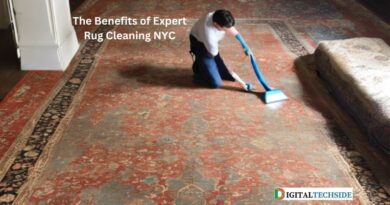What is the Role of an Interior Designer?
Interior designers play a multidisciplinary role in a project. The role of an interior designer goes beyond aesthetics, encompassing the creation of functional, beautiful spaces that reflect the clients’ needs and preferences. They are responsible for providing professional and accurate recommendations for the execution of interior design processes. Interior design for both residential and commercial spaces involves a lot more than just decorating a space. Besides taking care of the aesthetics, interior designers also make a space more functional for everyday use. Interior designers address space layouts, design concepts, material specifications, as well as intersecting trades for seamless execution of a project.
Some of the primary responsibilities of a designer include the following:
- Offering recommendations on building configuration and interior layout
- Creating project visualizations, 2D and 3D renderings, mood boards, etc.
- Determining timelines and product schedules based on different variables
- Selecting décor elements and furniture necessary for procurement and integration
Interior designers in Gurgaon become the medium between contractors, trade experts, engineers, and architects. Professional interior design reflects the economic state as well as cultural influences. The below section discusses in detail the multidisciplinary role of an interior designer in our society.
Interior designers in Delhi always keep an eye on the accessibility, aesthetics, practicality, and effectiveness of a project. They always ensure the safe and appropriate utilization of resources based on purpose and budget. Interior designers guide their respective clients in understanding the design theme and its impact on the outcome. In the present time, designers also pay attention to sustainability to reduce carbon footprints. Investing in the services of an interior designer is truly helpful in understanding these codes and regulations.
How Do Designers Assess the Effectiveness of an Interior Design?
The choices of a designer have a substantial impact on the well-being and safety of the occupants. The advice must be as accurate as necessary to avoid breaching laws, incurring additional expenses, and increasing risk factors for the client.
Perfect Balance Between Beauty and Comfort
One of the most prominent roles of an interior designer is to develop spaces that are both comfortable and appealing to the eye. Professionally designed rooms offer more style and comfort. The designers are extremely knowledgeable in combining different colours, textures, finishes, and lighting. Spaces that are designed with recommendations from interior designers in Delhi are more relaxing and enhance the overall quality of life.
Superior Well-Being
One simply cannot deny the influence of quality interior design on human well-being. It has a substantial impact on both the physical and mental health of a person. For example, the color palette of the interior affects mood. Shades of blue and green have a soothing effect. On the other hand, vibrant yellows and reds bring more energy to a space. Appropriate lighting helps reduce stress on the eyes and also enhances concentration.
Besides, interior designers always take ergonomics into account for space layouts and furniture. This makes certain that the space is comfortable and also helps in maintaining proper posture. According to healthcare experts interior design makes a notable impact on the recovery of patients.
Innovation and Creativity
Today interior design is not just confined to residential and commercial spaces. Workspaces and academic institutions are also seeking the expertise of interior designers to add a touch of innovation and creativity.
Interior designers can create spaces that promote active participation and collaboration among the occupants. Integration of flexible seating arrangements and modern learning tools helps in improving the overall experience for the students.
In corporate workspaces, efficient design plays a substantial role in boosting the morale of the employees as well as their productivity. Open workspaces are suitable for communication and sharing of ideas.
Use of Sustainable Materials
With the constant rise in environmental consciousness interior designers are also promoting the use of sustainable materials.
They are incorporating eco-friendly procedures and materials in decorating homes and offices. Sustainable practices not only reduce environmental footprint but also enhance the quality of indoor air.
Interior designers are now innovating ways to incorporate energy-efficient lighting and appliances, recycled materials, low-VOC paints, etc. Such materials are environmentally friendly and keep the indoor air healthy.
Integration of Traditional Art and Culture
Interior designers make thoughtful integration of art and culture in their design. It helps make spaces more meaningful and engaging. Interior Designers often make clever use of sculptures, artefacts, and art to create a unique and personal touch. These not only make a space more beautiful but also tell a story about the occupants.
Final Thoughts
The task of an interior designer is to define design while ensuring safety and functionality. The planning of the space should be such that it maximizes the functionality of every corner of a home or office. Interior designers do not just provide valuable advice. They also coordinate with other experts, suppliers, and tradesmen on a project. Hence, interior designers should have all the necessary knowledge to manage different stages of design and fulfilment in a project.

As a DIGITALTECHSIDE author, the majority of our articles have been focused on technology, blogging, business, lifestyle, social media, web design and development, e-commerce, money, health, education, entertainment, SEO, travel, and sports.
Contact us at digitaltechside@gmail.com if you have questions of anything.




